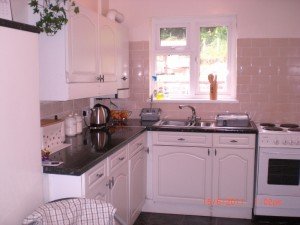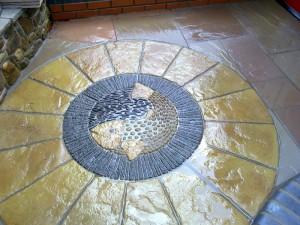 Are you looking to design and fit a new kitchen in Cardiff South Wales?
Are you looking to design and fit a new kitchen in Cardiff South Wales?
Thomas Building Services can assist you to make the most of your planned new or refurbished kitchen.
You should always start any new kitchen build by mapping out your current kitchen layout (or empty kitchen if you plan to start from scratch) on graph paper. Use metric measurements, as this is what kitchen manufacturers use. Highlight where the electric sockets are, how these return to the fuse box and where the plumbing and waste pipes are.
Add windows and any other restrictions, such as a chimney breast and doorway, then mark which kitchen walls are external or internal. If you have a boiler in the kitchen, highlight where and what type of boiler it is.
Kitchen gadgets and electrics
Work out how many sockets you’ll need at work-surface level. Most people have a kettle, toaster and microwave in regular use, so it’s good to think about placing these somewhere easy to access. Other kitchen gadgets to consider are breadmakers, coffee machines, food processors, fryers, hand blenders and mixers, health grills, jug blenders, juicers, slow cookers, smoothie makers and steamers.
For more great advice on how to best plan your new kitchen visit the Which Consumer Guide website or contact Thomas Building Services today and let us do all the hard work for you!!
 Making the right choice of patio surface
Making the right choice of patio surface
If your considering turning part of your garden into a patio area then there are a number of choices for you to consider with regard to material, size, colour, texture, and cost.
The choices of stone, clay or concrete paving available for patios seems to increase all the time together more intricate patio centre pieces.
The first thing to do is to decide why you’re building the patio, in other words, what are you going to use it for? If you’re laying something down because you’re doing up a property as a development project, you’ll want to get a sale through as quickly as possible, so you’ll obviously look at price more than anything else. But if you want to use it for barbecues and enjoying your garden for the next 20 years, then you’re more likely to spend on quality, and pay more attention to looks, too.
 Concrete, clay or stone for your patio ?
Concrete, clay or stone for your patio ?
Laying concrete slabs or flagstones can look good initially but cheap ones will fade because the colour comes from dye, and they are not pigmented all the way through. The textures that you can get range from smooth, which might be a liability for kids and elderly people, to very convincing imitations of real stone at the top end. Beware with some of these textured surfaces though, as it might get annoying not being able to find somewhere level to put your garden furniture and again, it could trip people up if it’s extremely rough.
The same things apply with clay blocks, although even the smoothest clay finish will probably have enough grip to prevent it becoming a trap for the unsteady. Clay is generally more expensive than concrete but the colouring is natural and goes all the way through the block, being a factor of the pigments in the clay mix used and the firing process. This means that clay bricks age gracefully and will still look good long after most concrete blocks have faded.
Stone is long-lasting and will not fade, but is costly and there’s less choice of colour and texture. Even when well worn though, as in churches that are centuries old, it still exudes quality. Of the three materials, stone will be the most expensive, and may well be tricky to lay as the sizes can’t be as accurate as man-made materials. But even that is beginning to change now, with small brick-sized blocks coming onto the market in the last few years that are very uniform in quality and lower in price, too.
If you want more information on the options you have available to you or wish to discuss your patio ideas then call us today for a FREE quotation and design discussion.
 Are you looking to design and fit a new kitchen in Cardiff South Wales?
Are you looking to design and fit a new kitchen in Cardiff South Wales?

 Making the right choice of patio surface
Making the right choice of patio surface Concrete, clay or stone for your patio ?
Concrete, clay or stone for your patio ?